skip to main |
skip to sidebar
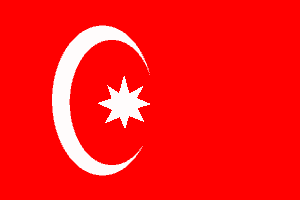
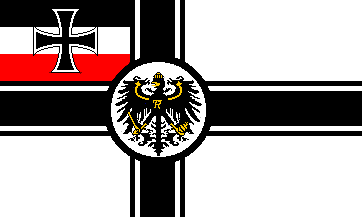 SMS Goeben or TCG Yavuz Sultan Selim - take you pick. What you can't deny is that few ships over the last century have had more of an impact on history and the fate of the West.
SMS Goeben or TCG Yavuz Sultan Selim - take you pick. What you can't deny is that few ships over the last century have had more of an impact on history and the fate of the West. The activities of Goeben and Breslau helped to bring Turkey into the war on the side of the Central Powers. Turkey's direct military contribution was of some value, but most important was the loss of the easiest route (via the Dardanelles) for Britain and France to ship aid to their Russian allies, and for Russia to ship out its grain, one of the main sources of its foreign exchange. Combined with the German blockade of the Baltic, this to a large extent cut off Russia from the outside world, if one excepts the difficult and underdeveloped routes through Archangelsk and Vladivostok. This in turn led to great difficulties in supplying the Russian army, substantially weakening Russia as a military partner for the Allies.
The presence of Goeben in particular was a major obstacle to Russian plans in the Black Sea. As of 1914, all of the Russian Black Sea battleships were pre-Dreadnoughts. Before the arrival of Goeben, they dominated the Black Sea, and a Bosphorus landing was under consideration. The arrival of Goeben dramatically changed the situation -- and even shore bombardment had to be conducted by almost the entire Russian Black Sea Fleet, since a smaller force could fall victim to Goeben.
A decisive Russian strike south, for the Bosphorus, would have knocked out the Ottoman Empire from the war, preventing the tragedy of the Battle of Gallipoli, and possibly changing the course of the war. The presence of Goeben effectively prevented it. This presence also helped the future succes of the Bolshevik Revolution.
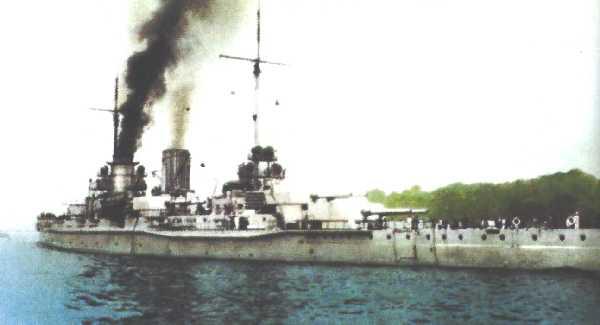
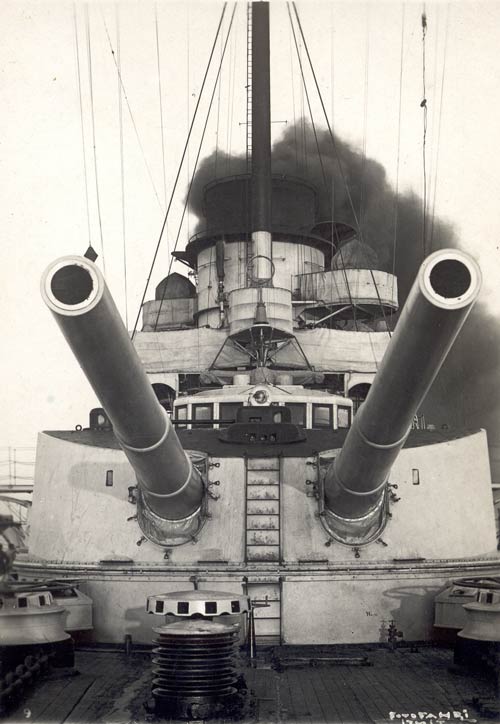 Goeben arrived in Turkish waters on 10th August 1914, served under the Turkish flag with her German officers and crew from 16th August, and officially transferred to Turkey in November 1914, although still mainly German manned and controlled. On the 29th October 1914, 'Goeben' and light cruiser 'Breslau' (see below) took part with Turkish forces in bombardments and raids on Russian Black Sea ports and shipping before the formal declaration of war between Turkey and Russia.
Goeben arrived in Turkish waters on 10th August 1914, served under the Turkish flag with her German officers and crew from 16th August, and officially transferred to Turkey in November 1914, although still mainly German manned and controlled. On the 29th October 1914, 'Goeben' and light cruiser 'Breslau' (see below) took part with Turkish forces in bombardments and raids on Russian Black Sea ports and shipping before the formal declaration of war between Turkey and Russia.
Goeben, damaged 18th November 1914, northern Black Sea 20 miles off Cape Sarych, Russian Crimea - 12in shell from Russian battleship 'Evstafi' . On the 17th, the squadron of five Russian Black Sea pre-dreadnoughts - 'Evstafi' (or 'Ivstafi'), 'Ioann Zlatoust', 'Panteleimon', 'Rotislav', 'Tri Sviatitelia', bombarded Trebizond on the far eastern coast of Turkey. 'Goeben' and 'Breslau' sailed to intercept off the Crimea. Only 'Goeben' and 'Evstafi' were initially in contact during the short action before both sides disengaged. 'Goeben' hit once with an opening salvo, 'Evstafi' hit four times
Goeben, damaged 26th December 1914, Black Sea in Turkish waters, 1 mile off the outer buoy into the Bosphorus - 2 Russian mines. On the 21st December 1914, Russian minelayers laid a large field off the Bosphorus. By then 'Goeben' was escorting three transports to the eastern port of Trebizond. On the night of the 23rd/24th, the Russians attempted, unsuccessfully to block the entrance to Zonguldak to stop the transport of vital coal supplies. 'Breslau', sailing to meet 'Goeben' intercepted and sank two of the four blockships. After the two German ships met up, 'Goeben' continued on to the Bosphorus, where she was mined in the afternoon. Badly damaged, flooded and with no local dock large enough to take her, 'Goeben' was repaired with cofferdam-filled concrete, but was not operational until May 1915.
Goeben, damaged 10th May 1915, Black Sea off the Turkish coast - by 2-12in shells from Russian battleships. At the start of the Gallipoli landings in late April 1915, the Russian pre-dreadnoughts carried out a series of bombardments of the Bosphorus area. This was repeated on the 9th May. 'Goeben' sortied and at 07.50hrs was in action with three of the Russians, including the 'Evstafi'. She failed to get any hits, received two herself, but was not seriously damaged. The two other Russian pre-dreadnoughts had come up, and the by-now seriously out-gunned 'Goeben' ceased fire at 08.12hrs and escaped with her higher speed.
Goeben, damaged 20th January 1918, Aegean Sea, off and within the Dardanelles, Turkey - by 3 British-laid mines, followed by aerial bombs. Sailed from the Bosphorus early on the 19th on a sortie with cruiser 'Breslau' to attack Allied forces off the Dardanelles. Struck one mine early on the 20th on passage out and slightly damaged. Sank British monitors 'Lord Raglan' and 'M.28' in Kusu Bay, Imbros island around 07.40 hrs, but as the two ships rounded Cape Kephalo at 0830 and headed for Mudros, Lemnos island, 'Breslau' hit a mine. 'Goeben' was taking her in tow when mined again, and then the cruiser detonated four more mines in quick succession, settling fast at 0900 with most of her crew. 'Goeben' headed back for the Dardanelles, hitting a third mine, and then half way in and listing, ran hard aground at Nagara Point just before midday, still on the 20th.
Attacked by British aircraft, including Sopwith Baby seaplanes from the 'Ark Royal', a reported 270 sorties were made, but the bombs that hit were too small to cause serious damage. The only British submarine 'E-2' was unserviceable at Malta. The 'E-14' (Lt Cdr White), normally on patrol in the Otranto Straits, was despatched from Corfu, broke through to Nagara Point on the 27th, but found 'Goeben' gone, towed off the day before by Turkish pre-dreadnought 'Torgud Reiss'. The British submarine was sunk.
Turkey offered her back to Germany in '63 and they said no. Shame on them for that short sighted decision. Wouldn't she have been great at the Deutsches Marinemuseum (German navy museum) in Wilhelmshaven?

 SMS Goeben or TCG Yavuz Sultan Selim - take you pick. What you can't deny is that few ships over the last century have had more of an impact on history and the fate of the West.
SMS Goeben or TCG Yavuz Sultan Selim - take you pick. What you can't deny is that few ships over the last century have had more of an impact on history and the fate of the West. 
Goeben arrived in Turkish waters on 10th August 1914, served under the Turkish flag with her German officers and crew from 16th August, and officially transferred to Turkey in November 1914, although still mainly German manned and controlled. On the 29th October 1914, 'Goeben' and light cruiser 'Breslau' (see below) took part with Turkish forces in bombardments and raids on Russian Black Sea ports and shipping before the formal declaration of war between Turkey and Russia.
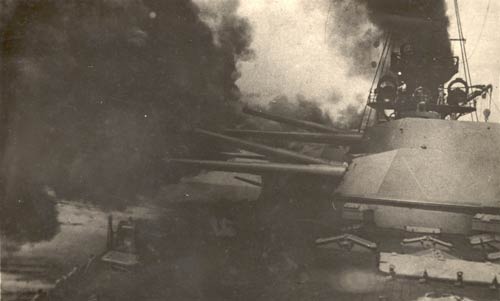









No comments:
Post a Comment